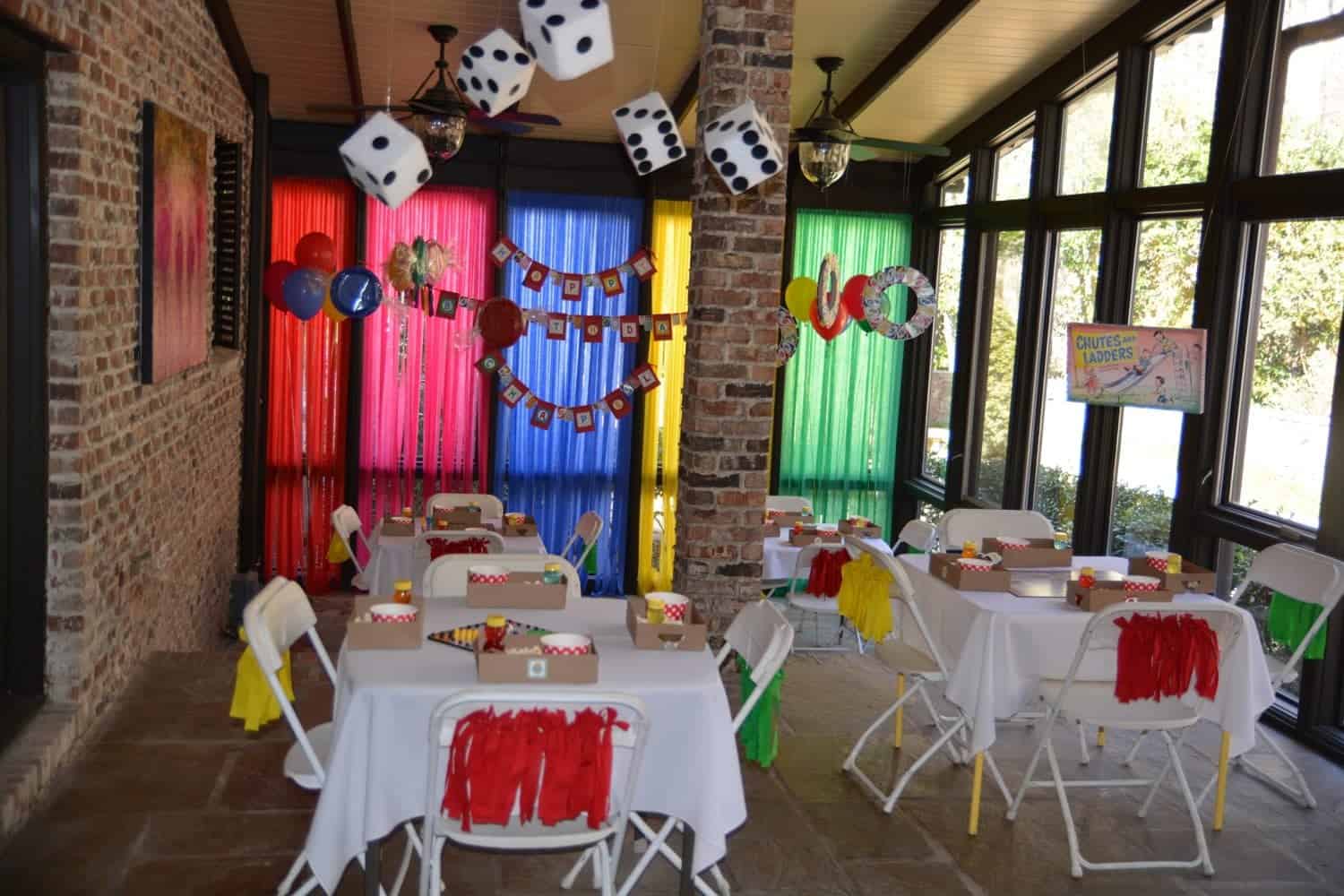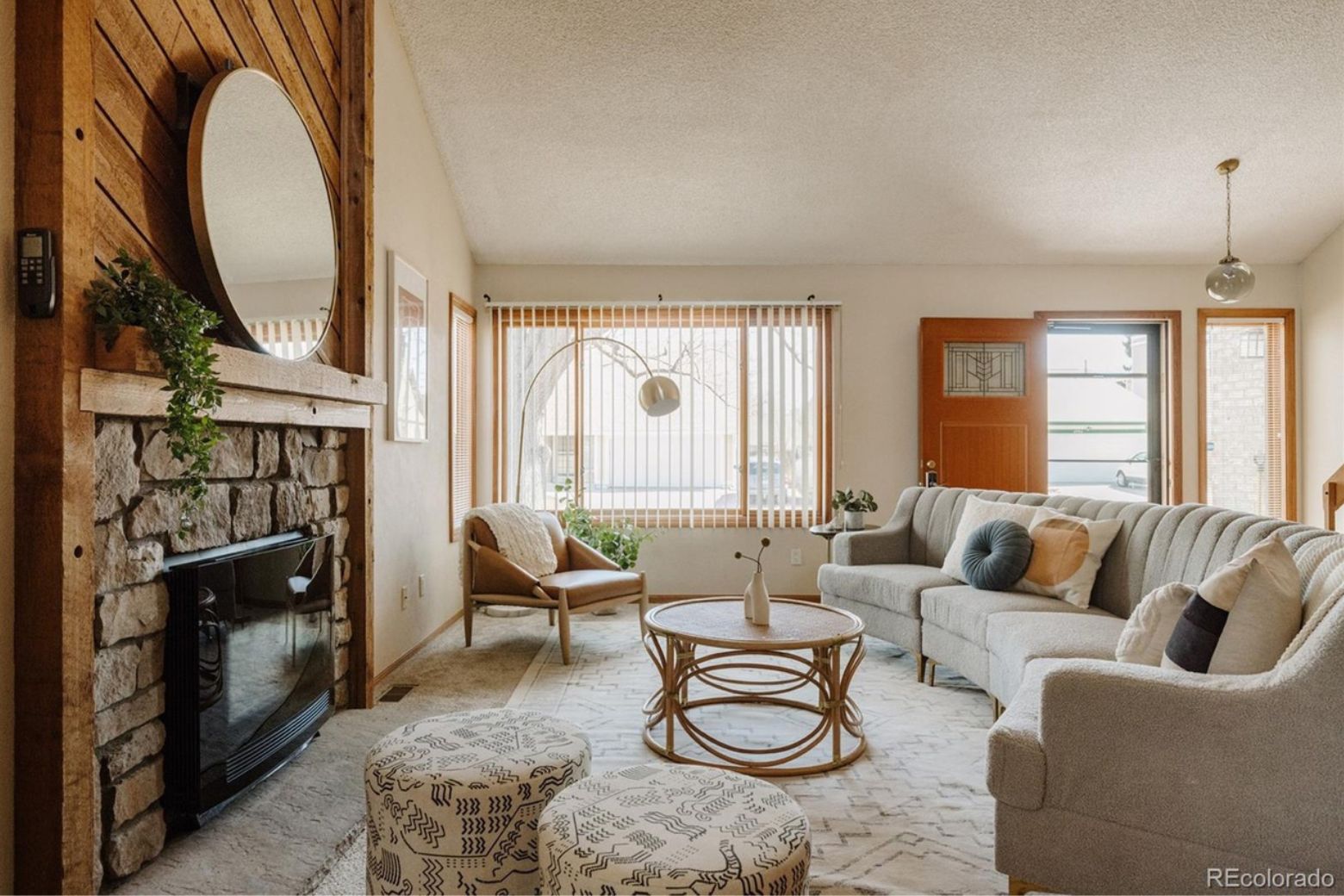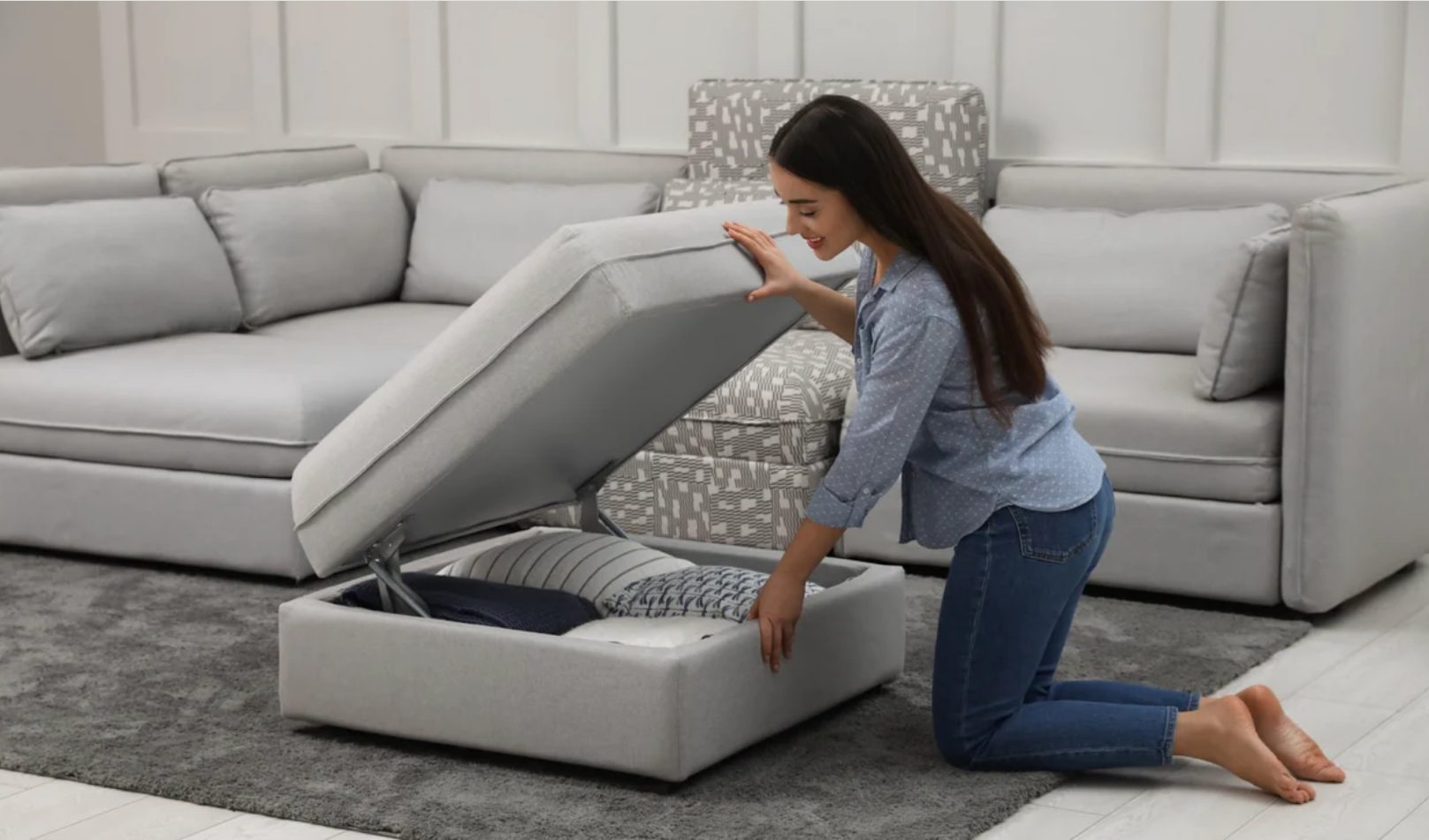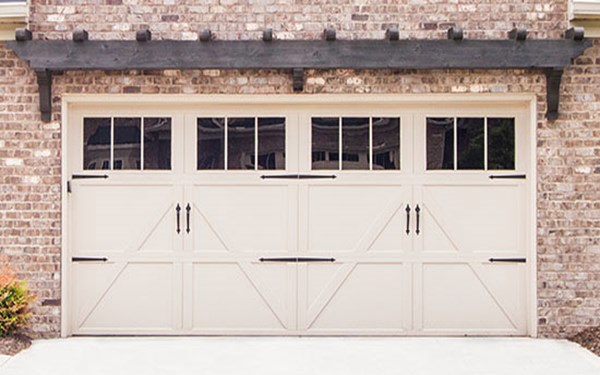Fun Ideas for Your Next Game Night

written by Carma Stahnke
Looking to put a new spin on your upcoming game night? Start by thinking outside the box! Whether you’re hosting a casual get-together, a birthday celebration or a holiday party, there are plenty of unique ways to keep the energy pumping and the laughter flowing.
Themed Game Night
Themed parties have long been a trusted standby, but that doesn’t mean they have to be unoriginal. Just consider what your guests have in common and go from there. You could throw an 80s bash or build your party around superheroes or a favorite TV show. Dress up, prepare snacks and choose activities that fit the mood. You’ll be surprised how enjoyable old pastimes are when tied to a creative concept.
Minute-to-Win-It Challenges
If you’re goal is high-speed entertainment, short and silly tasks are perfect – and if one doesn’t work, simply move on to the next. You could try stacking cups, balancing items or racing to complete a puzzle in under 60 seconds. These fast-paced competitions are especially fun for kids and adults to play side by side, since skill isn’t required. All you really need is a good attitude and a timer!
Board Game Tournament
If your guests prefer classics like Life, Sorry or Operation, take a different approach by organizing a mini-tournament. Rotate through a few games, keep score and crown a champion at the end. You can even prepare some prizes for the winner and runners-up – like a mock trophy or a personalized T-shirt. This format works really well with larger groups because everyone is engaged. A little rivalry also adds excitement!
Tech-Enhanced Fun
Technology opens the door to a plethora of possibilities, assuming your friends and family are comfortable with interactive apps or online party sites. Trivia platforms are particularly good here, as you don’t have to prepare questions ahead of time. Easy to organize and ideal for larger groups, these options allow those unable to attend to join virtually, so no one feels left out.
Outdoor Game Night
If the weather’s nice, take the adventure outside! Consider giant Jenga, cornhole or glow-in-the-dark hide-and-seek for a playful twist on the usual living room setup. The extra space lets everyone move around more freely, and the fresh air brings a relaxed vibe. Just be sure to have blankets available and plenty of lighting to keep the festivities going after the sun sets.
Food and Game Pairing
Another way to make your party truly one of a kind? Focus on the food! Inject an element of surprise with unexpected snacks like tater tot skewers or mac and cheese tacos. You could also prepare dishes of a certain type or category, like vegetarian cuisine or ethnic favorites. If you time various courses throughout the evening, your guests will get a break between rounds to chat and recharge. An open buffet along with assorted table snacks is a great idea as well.
The best game nights are filled with laughter, connection and a little friendly competition, so don’t feel like you need to follow strict rules. All that matters is making memories with the people you love. So map out your plan, gather your crew and get ready for a night of fun!
original article found at https://blog.coldwellbanker.com/fun-ideas-for-your-next-game-night/
6 Reasons Why December Might Be the Right Time to Buy a Home

Written by Carma Stahnke
Are you thinking about buying a home but waiting until spring to start looking? You may be surprised to learn that purchasing in December – yes, even during the holidays – brings many advantages. While winter isn’t the most popular season for aspiring property owners, it could actually be the perfect time for you to say yes to a new address.
1. Less Competition
Most people are busy with shopping, traveling and year-end to-dos, so buyer activity tends to slow down. That means fewer bidding wars, less pressure and a greater chance your offer gets accepted – maybe even below asking price. It’s also a refreshing change of pace from the frenzy of spring and summer markets, allowing you more breathing room to think through your decisions without feeling rushed.
2. Motivated Sellers
If a property is listed at the end of the year, odds are that the sellers are serious about sealing the deal quickly. Whether they’re moving because of a job relocation, tax reasons or personal circumstances, many are eager and happy to negotiate. That motivation can work in your favor – you might get a better price, more flexible terms or extras like closing cost credits or appliances.
3. Potential Tax Benefits
Depending on local regulations, completing the transaction before December 31 may mean you can deduct certain expenses like mortgage interest, real estate taxes and points on your loan when you file the following April. These potential savings are definitely worth exploring with a financial professional. They could substantially add up and make your first year of homeownership a little easier on the wallet.
4. Faster Closing Timeline
Because lenders, appraisers, inspectors and title companies are typically less busy during winter season, they can often move more quickly when assisting the clients they do have. That means shorter waiting times and fewer delays – music to any buyer’s ears. You could be unpacking boxes and settling into your new home before the ball drops!
5. A Realistic Look at the Property
Frosty conditions can reveal both positives and negatives that you might not notice when the weather is nice – like how well a residence is insulated, how the furnace performs or if the roof handles snow and ice. You’ll see the house in its most vulnerable state, which can go a long way in relieving your stress. Buying in December is a great opportunity to make sure the home is truly comfortable and efficient during colder months.
6. Holiday Bargains
Although you might be focused on securing your down payment and other costs, you don’t want to forget about the money you’ll spend on home décor after you move in. By purchasing in December, you’ll be able to take advantage of clearance sales – which can save you a bundle on furniture, appliances, bedding and more. Plus, who doesn’t love the idea of celebrating the holidays in a beautiful new space?
If you’re ready to buy, don’t let the calendar hold you back. Making your move in December offers measurable benefits – and you might just be welcoming the new year in a new home. It’s a smart strategy that could put you ahead of the springtime rush. Why not give yourself the gift of a fresh start?
original article found at https://blog.coldwellbanker.com/6-reasons-why-december-might-be-the-right-time-to-buy-a-home/
8 Tips to Stage Your Home Like a Pro

written by Michel Smith
The goal is simple: Help potential buyers picture themselves living there. And the good news? You don’t need a professional designer to make your home shine. With a few strategic updates and a little bit of effort, you can create a welcoming, polished space that might just lead to faster and better offers.
Start With a Deep Clean
Before you rearrange or decorate, make sure your home is spotless. Buyers notice the little things – dusty baseboards, smudged mirrors or dirty grout can signal neglect. A deep clean helps your home feel cared for and move-in ready. Pay special attention to kitchens and bathrooms, where cleanliness is especially critical.
Declutter and Depersonalize
Buyers want to imagine themselves in your home – not be reminded it’s yours. That means minimizing personal items like family photos, collections or bold décor choices. Clearing off countertops, shelves and surfaces also helps rooms appear larger and more open.
Create a Cohesive Look
Consistency matters. While each room can have its own personality, using a unified color palette and design style helps the home feel intentional. Avoid jarring transitions or dramatically different themes from one room to the next – cohesion helps buyers move effortlessly from space to space.
Boost Curb Appeal
First impressions start before buyers step inside. Trim overgrown landscaping, power-wash walkways and consider adding potted plants or a new welcome mat. A tidy, attractive entryway sets the stage for what’s inside.
Use Neutral Colors and Soft Lighting
Bright walls or dramatic color schemes might be your style, but they can distract buyers. Neutral tones like beige or light gray create a calming atmosphere. Use warm, layered lighting – floor lamps, table lamps and soft bulbs – to make each space feel inviting.
Rearrange Furniture for Flow
Your layout might be perfect for daily life, but when staging, less is more. Remove bulky or excess furniture to create space and encourage easy movement. Arrange seating areas to highlight focal points like a fireplace or beautiful view.
Add Simple Touches
Fresh flowers, a bowl of fruit in the kitchen or fluffy white towels in the bathroom can make your home feel stylized. Stick with items that feel clean, fresh and hotel-like – nothing too overpowering.
Highlight Your Home’s Best Features
Have a large picture window? Sleek built-ins? A statement fireplace? Make sure these standout elements are clean, visible and easy to notice – not hidden behind furniture, drapes or clutter. This is your chance to guide buyers’ attention to what makes your home special!
Staging isn’t about hiding your home – it’s about helping buyers see its full potential. With a few smart tweaks, you can make your property more appealing. Connect with your local agent today to get more ideas on how to be market-ready so you can get the best possible price.
original article found at https://blog.coldwellbanker.com/8-tips-to-stage-your-home-like-a-pro/
Reclaimed Wood: How to Use It and Where to Find It

written by Carma Stahnke
Whether it’s the weathered patina, the visible nail holes or the sense of history, salvaged wood brings instant character and warmth to any space. Plus, it’s a sustainable choice that gives new life to old things. But how can you use it and where can you find it?
How to Use Reclaimed Wood
When thinking about how to enhance your home décor, you want to go for balance – a fundamental principal in interior design. If a space feels uninviting or incomplete, introducing natural wood elements may be the perfect way to equalize color, texture and shape for a harmonious, welcoming atmosphere.
DIY and Decorative Items
You could start small with manageable, creative projects like picture frames, candle holders, wall art, planters – or even a simple tray for serving drinks and/or appetizers. These little touches can make a big impact and are a fun way to showcase your individual style.
Open Shelving
How about using reclaimed boards to build floating shelves in your kitchen, bath or office? They infuse warmth, depth and visual interest, especially against clean, modern backdrops. They’re also practical, giving you extra storage for dishware, artwork and books.
Mantels and Beams
Repurposed cedar and birch, as just two examples, make for a stunning fireplace mantel or decorative ceiling beams. These statement pieces add an architectural punch to your space, drawing the eye upward and exuding an expansive, luxurious quality.
Furniture Projects
From farmhouse dining tables to rustic benches to eye-catching coffee tables, furniture made from reclaimed oak, maple or pine feels timeless, personal and original. It’s often sturdier than new lumber and can last far into the future. You could create your own family heirloom!
Statement Walls
If a more dramatic change is what you’re after, go for a cozy, pastoral vibe with a reclaimed wood accent wall in your living room, entryway or bedroom. The variation in grain and color will automatically make your feature one-of-a-kind and will help balance out plaster walls that may seem flat or cold.
Where to Find Reclaimed Wood
Once you’ve determined the area of your home you want to focus on and the general size of your project, it’s time to collect your materials. Reclaimed wood is in high demand, so you should have many options, depending on your location.
Architectural Salvage Yards
These treasure troves are packed with old lumber from barns, factories and historic residences. You’ll be excited to discover unique pieces with rich textures and years of wear. Ask staff about the origin of these objects – they usually have great stories behind them.
Online Marketplaces
Websites like Craigslist, Facebook Marketplace and eBay are gold mines for all types of timber originally used in siding, decking, flooring and window frames. You should be able to find beams, planks, pallets and more at a fraction of retail prices – maybe even for free if you’re willing to haul it away.
Demolition Sites and Renovations
If you spot a building that is being torn down or remodeled, don’t be shy – ask the contractor or homeowner if any surplus material is being salvaged or discarded. Don’t be surprised if they’re more than happy to let you take it.
Local Farms and Barns
Old barns and large agricultural structures are commonly taken down piece by piece, and the wood can be up for grabs or sold for pennies on the dollar. Reach out to nearby farms or rural property owners for potential opportunities.
Specialty Retailers
If you’re interested in something specific and ready to use, contact businesses that specialize in this field. They often mill, kiln-dry and treat their natural products so they’re easier to work with. They also check for termites, lead-based paint, nails and other imperfections.
Reclaimed wood is more than just a trend – it’s a way to add soul and sustainability to your home. Whether you’re creating a whole new look or injecting some rustic flair, there’s no shortage of ways to incorporate this beautiful, time-worn material into your design. So start hunting, get inspired and let your next project tell a story that’s already decades in the making.
The Impact of Voice-Control Technology In Your Home

written by Kimberly Quevedo
As smart-home capabilities continue to accelerate, voice-control technology is at the center of it all, upscaling living while simplifying daily, repetitive tasks. They provide practical solutions and connections to technological innovation while future-proofing your home’s resale value. However, privacy, dependency and reliability remain top considerations for homeowners. Whether you’re ready to integrate throughout your home or want to intertwine a few devices, voice-controlled features can provide significant value with thoughtful planning.
Voice-Control Technology Benefits
Offering streamlined convenience and energy efficiency, voice control has many daily perks. It eliminates the need to locate remotes, walk to switches or navigate through smartphone apps.
Simple voice commands can adjust lighting through brands like Philips Hue, LIFX, and Sengled, while devices such as Amazon Echo, Google Nest Hub or Apple HomePod provide weather updates, delivery notifications and news briefings. Security becomes effortless with systems from Ring, ADT and SimpliSafe that can arm alarms, check door locks and monitor camera feeds through spoken requests. Smart doorbells and locks from August, Schlage and Yale complete your home’s protective barrier. You can even transform ordinary appliances into voice-responsive devices with smart plugs from TP-Link and Wyze.
Voice-activated kitchen appliances can update your cooking space into an intelligent command center. Samsung and LG smart refrigerators even suggest recipes and track inventory, while GE and Whirlpool ovens and microwaves can respond to voice instructions when you have occupied hands.
Additionally, energy-saving features can help reduce utility costs while setting an ideal environment. Smart thermostats from Nest, Ecobee and Honeywell can be programmed to your schedule.
Voice-control features also can help you identify consumption and usage patterns, offering savings opportunities while updating your home’s capabilities and increasing its value.
Thoughtful Considerations
While integrating voice-activated technology, you’ll want to consider privacy implications, internet connectivity and background noise.
Data collection and unauthorized access are valid concerns. You can mitigate them by regularly reviewing privacy settings, enabling features that automatically delete voice recordings and ensuring your home network uses strong encryption and updated passwords. Some devices also offer physical mute buttons that completely disable listening when privacy is paramount.
Additionally, power or internet failures can disrupt the functionality of your home. You’ll want to integrate voice-technology features with a manual override for critical systems and consider backup power solutions for essential devices. Keep traditional light switches accessible, ensure door locks have physical key backups and maintain manual thermostats for emergencies.
And voice-activated devices may not understand the commands correctly if there are issues with interference or speech. To optimize performance, consider the acoustic environment when placing smart speakers, train devices to recognize different family members’ voices and practice consistent command phrasing. Many systems improve over time as they learn your household’s speech patterns.
How Much Voice-Control Technology Is Right for You?
Considering comfort, preferences, capability and future investment, you will be able to understand what level of voice integration works best for you. Whether you input a few compatible devices or a comprehensive voice activation system, you’ll want to keep realistic expectations about the capabilities and limitations. Voice-controlled devices and appliances can transform how you interact with your living space if you are mindful about how you incorporate them.
original article found at https://blog.coldwellbanker.com/the-impact-of-voice-control-technology-in-your-home/
Multi-Use Furniture: Saving Space With Style

written by Carma Stahnke
In today’s homes, space is at a premium – and every square foot counts. Whether you want to make the most of a studio apartment or just need to clear out some clutter, multi-use furniture is the secret to smart, stylish living. These functional heroes go beyond the traditional, serving two or three purposes with ease – and giving your décor a refresh at the same time!
Sleeper Sofas and Daybeds
Perfect for living rooms or offices that double as guest quarters, these pieces offer comfortable seating by day and a cozy bed by night. They’re a real lifesaver during the holidays or when friends and family drop by unexpectedly. You can choose from a variety of mattresses, like memory foam, inner spring and hybrid models – and be sure to check out sleepers with compartments for pillows, linens and blankets.
Versatile Ottomans
Another interesting furniture option, modern ottomans can be used as footrests, coffee tables, extra seating and even toy chests. If you don’t have room for a sofa or daybed, a sleeper ottoman could be ideal for overnight accommodation. They also come in every style imaginable, from sleek leather to woven textures, allowing them to fit smoothly into any color scheme or layout. Compact, affordable and endlessly practical – what’s not to love?
Extendable Dining Tables
Great for daily meals and expandable when company comes over, these highly functional items can adjust to your needs – no more crowding or dragging out awkward folding tables. They can be found in a wide array of sizes, materials and shapes, and many feature hidden leaves or clever folding mechanisms for easy setup. Whether you enjoy hosting intimate dinners, game nights with friends or full-blown dinner parties, you can find the perfect extendable table to entertain with flair.
Lift-Top Coffee Tables
Increasingly popular for their many positive attributes, lift-top coffee tables can serve as mini office areas, casual eating spots, storage solutions – or all of the above. If you work remotely, you’ll wonder how you ever got by without one. As an added bonus, these pieces are economical as well as chic, with quality brands as low as $150.
Built-In Bookshelves With Desks
An answer to underutilized wall space, tight corners or difficult layouts, a bookshelf-desk combo offers many benefits. Vertical shelving gives you a place for dishware, books and artistic elements, and an accompanying work surface has a much smaller footprint than a free-standing desk. Depending on how much room you have, you could consider installing a closet-type sliding or bifold door to create an instant hideaway for office clutter or messy craft projects.
Benches With Storage
If you’re looking to get more use from your foyer, dining area or hallway, or maybe that empty spot at the foot of your bed, these benches provide seating and storage in one tidy package – ideal for stashing seasonal gear. They also make a great perch for putting on shoes or dropping bags when you walk in. With the right cushion or throw, they become an instant décor upgrade as well.
Murphy Beds
The original space-saving superstar, Murphy beds fold up seamlessly into a wall or cabinet when not in use. Available in traditional twin through queen sizes, today’s models can incorporate shelving, desks and even couches to instantly transform an office into a bedroom and back again. Some designs can be quite elaborate, including built-in lighting and smart technologies.
With thoughtfully chosen multi-use furniture, you’ll soon discover that you don’t need a massive residence to live comfortably and affordably. You can create a welcoming home that is efficient, flexible and right on trend.
original article found at https://blog.coldwellbanker.com/multi-use-furniture-saving-space-with-style/
Ready to Buy? See How Much Home You Can Afford in 7 Steps

written by: Carma Stahnke
Buying a home is exciting, emotional and yes – a little intimidating, especially when you start thinking about finances. If you’re concerned about how much house you can actually afford, you’re not alone. The good news is that by taking the right steps now, you can start your search with confidence and clarity – and an eye on the future.
Step 1: Know Your Budget
As you get ready to start swiping through listings, you should first figure out what fits comfortably in your monthly spending plan. A common rule of thumb? Keep your total housing costs — mortgage, property taxes, insurance and HOA fees — under 28% of your gross monthly income. For example, if you make $7,000 a month before taxes, you’ll want to keep your monthly housing expenses to $1,960 or less.
Step 2: Check Your Debt-to-Income Ratio (DTI)
Your DTI is very important to lenders, telling them how much debt you’re currently juggling and how the purchase of a home will increase your expenses. A lower DTI not only makes you a more attractive buyer – it can also unlock better loan terms and lower interest rates. Ideally, your total monthly obligations (car payments, student loans, credit cards, etc.) should stay below 36% of your income.
Step 3: Plan Your Down Payment
The more you put down, the less you have to borrow, which means lower monthly payments and possibly not having to get private mortgage insurance (PMI). A 20% down payment is great if you can manage it, but many buyers go with 3-10%, especially with FHA or first-time buyer programs. And don’t forget closing costs – usually around 2-5% of the purchase price.
Step 4: Explore Your Loan Options
All mortgages are not created equal. From 30-year fixed to adjustable-rate loans, the type you choose plays a big role in how much property you can take on (and how much you’ll pay over time). Before you talk with your lender, do some research, come prepared and ask plenty of questions. You’ll want to learn if you’re eligible for any governmental programs, if your monthly requirement could change and/or what will happen if you ever have unexpected financial difficulties.
Step 5: Think Beyond the Numbers
The bank might say you can afford that dream home – but whether or not you should actually purchase it is another question. Be honest about what matters most to you in terms of lifestyle. Do you want to travel, save more or splurge on concert tickets? Then you should leave room in your budget for these activities. Also remember that once you move in, you’ll most likely want to buy furniture and other household items as well as upgrade with new paint or cabinetry. The cost of personalizing your new residence can quickly add up.
Step 6: Use a Mortgage Calculator
Before you start seriously house shopping, try experimenting with an online mortgage calculator. It will show you how changes in interest rates, home prices and loan terms impact your monthly payment. Zillow and realtor.com® offer easy-to-use tools that take a lot of the guesswork out of the budgeting process, allowing you to see results in a matter of seconds.
Step 7: Talk to the Pros
Every day, real estate professionals and mortgage lenders navigate their clients through their buying journey – so lean on their expertise. A good agent will tailor the search to your recommended price range and refer you to a lender who will explain your options and help you make the best decisions for your unique circumstances. You should also chat with friends and family who have recently bought a home and can give you some valuable firsthand advice.
Determining how much home you can afford isn’t just about cold hard numbers. It’s about finding a place where you can live well and sleep easy. With a clear plan, a trusted team and a little prep, you’ll be well on your way to finding a property you love without breaking the bank.
original article found here: https://blog.coldwellbanker.com/ready-to-buy-see-how-much-home-you-can-afford-in-7-steps/
Toast Autumn With These Seasonal Sips

written by: Michel Smith
From orchard-inspired flavors to warming spices, this collection of seasonal sips is made for savoring simple pleasures – one glass at a time.
Apple Cider Mule
This cozy twist on the classic Moscow Mule blends apple cider, vodka, lime juice and spicy ginger beer. It’s a delicious pour that adds a touch of flair to any outdoor get-together or game day party. Garnish with a cinnamon stick or apple slice for a festive touch. This mule pairs beautifully with a cheese board featuring sharp cheddar and toasted nuts.
Pomegranate Sunrise Mocktail
Here’s a go-to autumn drink that works well for baby showers, weekdays meals or mixed-crowd parties. Deep ruby pomegranate tea, zesty lime and club soda form the basis of this jewel-toned mocktail. It’s bold, flavorful and looks stunning in a glass. Serve with Mediterranean-style nibbles like hummus, stuffed grape leaves or olives.
Maple Whiskey Sour
A smooth cocktail that tastes like fall in a glass. This autumn-inspired take on the whiskey sour swaps out simple syrup for rich maple syrup, adding earthy sweetness that mixes nicely with whiskey. Fresh lemon juice keeps things bright and balanced, while a touch of aquafaba (or egg white) adds a velvety foam on top – optional, but worth it! Try serving with roasted root vegetables, pork tenderloin or a bubbling mac and cheese for a hearty presentation.
Cranberry Sangria Punch
With just the right mix of sweet and tart, this vibrant sangria will be a crowd-pleaser at your next potluck, tailgate or casual dinner party. Apples, cranberries and orange slices mingle with Campari and bottled sangria for a fruity, flavorful drink that’s easy to prep ahead. Add a splash of champagne for a little fizz and garnish with fresh fruit. Pair it with charcuterie, grilled sausages or roasted chicken for effortless entertaining.
Pumpkin Spice White Russian
An inviting cocktail-hour indulgence that’s perfect for dessert, movie nights or anytime you’re craving something sweet. This riff on the classic White Russian swaps heavy cream for pumpkin spice creamer, blending with vodka and coffee liqueur for a comforting sip. Optional but highly recommended: a graham cracker and pumpkin spice rim for extra flair. Serve with spiced cookies, pumpkin pie or enjoy it as a decadent nightcap.
Harvest Moon Mocktail
A sophisticated sip that channels the spirit of autumn – ideal for book clubs, family-style dinners or any small gathering. This layered mocktail blends astringent black tea, spicy ginger beer, and a touch of rich fig syrup for a drink that’s earthy, lightly sweet and gently sparkling. It’s a non-creamy option with real depth. Serve alongside roasted squash salad, spiced flatbreads or caramel apple muffins.
The fall brings a bounty of flavors worth celebrating. From bold cocktails to balanced mocktails, these drinks are your invitation to slow down, gather your favorite people and savor the richness of the season – with style and ease. Cheers!
original article found: https://blog.coldwellbanker.com/toast-autumn-with-these-seasonal-sips/
Sustainable Home Features Today’s Buyers Want

written by Michel Smith
Eco-conscious consumers are looking for properties that are both beautiful and built with the environment and long-term savings in mind. From materials and mechanics to curb appeal and certifications, sustainable features now help homes stand out and sell faster.
Stylish and Sustainable Kitchens
Modern eco-focused kitchens are a marriage of form and function. Water-efficient dishwashers, induction cooktops and energy-efficient appliances deliver serious energy savings and blend seamlessly into contemporary designs. Special features like composting stations and built-in recycling drawers reduce waste without sacrificing style.
Energy-Efficient Tech
Smart thermostats, motion-sensing lights and app-based HVAC controls offer hands-off functionality and can reduce energy use. A system that automates lights, heating and cooling can slash utility bills while maximizing comfort. Bonus: Green homes may qualify for rebates or tax credits.
The Electric Shift
Gas-free homes are on the rise, with buyers increasingly drawn to energy-efficient electric systems that might include heat pumps and tankless water heaters. Residences that come EV-ready, with 240V outlets or charging stations in the garage, offer future-forward appeal and convenience for the growing number of electric vehicle owners.
Eco-Chic Materials
Sustainable design can be aesthetically appealing – and buyers are noticing. Bamboo and cork flooring are renewable alternatives that offer natural warmth and durability. Countertops made from recycled glass or paper-based composites add character while reducing waste. Reclaimed wood and metals bring a sense of history and resourcefulness to refined interiors. Low- or no-VOC paints help keep indoor air clean, an important perk for health-conscious buyers.
Insulation Innovation
Energy savings start with thoughtful construction. Buyers look for advanced insulation like spray foam and high-performance windows that reduce heat loss. Even more exciting is passive design, which optimizes a home’s orientation, window placement and materials to naturally regulate temperature and minimize energy use – all without relying on a home’s mechanical systems.
Greener Curb Appeal
Sustainability extends outside. Permeable driveways decrease runoff and erosion. Green roofs bolster a home’s insulation and help purify the air. Solar shingles offer a sleek alternative to traditional panels, generating energy for homeowners. Eco-friendly landscaping that incorporates native plants, drought-tolerant greenery and pollinator-friendly gardens reduces water use, supports biodiversity and creates a lower-maintenance yard.
Healthy Living
Biophilic design, the practice of connecting people to nature through architecture, uses elements like natural light, fresh air and indoor greenery to enhance well-being. These features don’t just feel good; they also reduce lighting and HVAC needs. Other ways to support both personal health and environmental goals include adding features like high-efficiency air filters, toxin-free materials and operable skylights.
What’s Ahead in Sustainable Homes
Net-zero homes, which produce as much energy as they consume, are poised to become the gold standard. Achieved through airtight construction, efficient systems and renewable energy (like solar), these homes offer lower utility bills and broad buyer appeal. LEED, Energy Star and WELL certifications also help home shoppers identify truly sustainable properties and can increase resale value.
Buyers are looking for homes that balance energy efficiency with contemporary flair. From eco-smart appliances to features like EV-readiness and wellness-enhancing design, sustainability adds real-world value to properties. Wondering which ones offer the best return on investment? Turn to a trusted real estate professional for more insights about green upgrades that fit your lifestyle and budget.
original article found at https://blog.coldwellbanker.com/sustainable-home-features-todays-buyers-want/
Make a Statement With the Perfect Garage Door

written by: Carma Stahnke
Your garage door isn’t just a practical entryway – it’s a defining element of your home’s exterior and can dramatically boost curb appeal, enhance value and improve energy efficiency and security. Whether you’re building from the ground up or simply ready for a refresh, understanding the different types and styles will help you make the best choice for your property and budget.
Sectional: Versatile and Classic
Sectionals are the all-American favorite – and for good reason. Made of panels connected by hinges, they glide smoothly along a track and tuck neatly overhead. They’re available in a wide array of materials and looks, making them super customizable and compatible with almost any architectural style. If you’re seeking sophistication, dependability and plenty of options to personalize, a sectional door would be an excellent choice.
Carriage House: Old-World Charm Meets Modern Function
Think barn doors, but smarter. These beauties give off warm, vintage vibes with details like decorative hardware, crossbuck features and quaint windows – but they open with modern overhead convenience. Ideal for rural, cottage and rustic homes, carriage house models are not only charming – they add instant character to properties where aesthetics matter.
Slide-to-the-Side: Unique and Space-Savvy
If your garage has limited headroom or an unusual layout, slide-to-the-side varieties offer a creative solution. These open and close horizontally along the interior wall, making them functional in tight or tricky spaces. They’re less common, which adds a touch of uniqueness, and are available in traditional as well as modern alternatives. Whichever you choose, your slide-to-the-side entryway will add visual interest and value to your home.
Side-Hinged: Elegant and Traditional
Side-hinged types swing outward like French doors – perfect for historic residences or anyone craving that custom, handcrafted vibe. Typically made of wood (though steel versions exist), they’re a chic nod to the past that can also feel luxurious and upscale. If you appreciate classic architecture and vintage elegance, a side-hinged model may be exactly what you’re looking for.
Tilt-Up: Retro Simplicity or Clean and Contemporary
Whether you choose canopy or fully retractable, this no-frills design works equally well with older, contemporary and budget-friendly homes. Made of one solid panel that can be opened manually or with a remote device, tilt-up doors deliver simplicity, affordability and originality. Although somewhat limited in style, newer materials can give them a fresh, updated feel that doesn’t sacrifice utility.
Roll-Up: Rugged and Industrial
Built for durability, roll-ups are made of horizontal slats that coil above the entrance. You’ll often see them in commercial spaces, but they work just as well in residential settings that lean minimal or industrial. They’re also great for tight spaces, detached structures or anywhere security is a top priority.
Whether you’re aiming for sleek sophistication or rustic charm, the right design will elevate curb appeal, improve daily convenience and increase the marketability of your property. Choose wisely, and your home will be the talk of the neighborhood!
original article found at: https://blog.coldwellbanker.com/make-a-statement-with-the-perfect-garage-door/

 Facebook
Facebook
 X
X
 Pinterest
Pinterest
 Copy Link
Copy Link